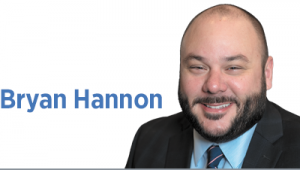Subscriber Benefit
As a subscriber you can listen to articles at work, in the car, or while you work out. Subscribe Now![]()
As state lawmakers consider increasing public health funding, is now the time to increase the state’s cigarette tax?
 In 2017, lawmakers considered raising the cigarette tax as one means to pay for Indiana’s underfunded roads and bridges. It was a solution that solved two of the state’s most pressing challenges at the time—its high smoking rate and crumbling infrastructure. The Legislature eventually adopted a record $1.2 billion roads package but never increased the state’s low cigarette tax, leaving tobacco use—the leading cause of death and disease in Indiana—unaddressed.
In 2017, lawmakers considered raising the cigarette tax as one means to pay for Indiana’s underfunded roads and bridges. It was a solution that solved two of the state’s most pressing challenges at the time—its high smoking rate and crumbling infrastructure. The Legislature eventually adopted a record $1.2 billion roads package but never increased the state’s low cigarette tax, leaving tobacco use—the leading cause of death and disease in Indiana—unaddressed.
The results of that policy decision are in the rankings. A recent CNBC report ranked Indiana number one in the nation for infrastructure. Meanwhile, Indiana’s cigarette tax rate ranks 39th in the country, and the state remains in poor health, with a high adult smoking rate, low levels of public health investment and a declining life expectancy.
The 2023 legislative session brings new promise that lawmakers will finally make investments in public health. Lawmakers are set to consider new recommendations, including from the Governor’s Public Health Commission. But it is critical they do not forget about the low-hanging fruit that has gone unpicked for too long: tobacco control.
In 2000, Indiana dedicated $35 million annually to tobacco prevention and cessation programs that reached Hoosiers with fact-based programs and services in their communities. Today, the state invests just $7.5 million in tobacco control, even as smoking-related health care costs have climbed to $3.4 billion annually.
If Indiana simply doubled its budget for the tobacco control program to $15 million annually, a far cry from its high-water mark, it would help an estimated 2,400 kids avoid a lifetime of tobacco addiction and save our state $50 million in future health care expenditures.
Failure to invest in public health—and to raise taxes on all tobacco products—is not without cost. For example, Indiana’s Medicaid program spends an estimated $634 million annually on smoking-related illnesses, while one study found employer costs go up more than $6,000 per year for each employee who smokes.
Raising the cigarette tax and placing a parallel tax on all other tobacco products, including e-cigarettes, is a proven method to reduce tobacco use and improve health. There are few policy prescriptions that are as effective, work as quickly or enjoy as much public support as a significant tobacco tax increase.
A $2 per-pack increase in the cigarette tax would help 50,200 adults quit smoking, protect 24,500 kids from starting and reduce long-term health care costs by $1.57 billion. Importantly, it would generate $371 million in new revenue in the first year that could be directed to public health initiatives.
We have seen what is possible when Statehouse leaders prioritize something. Now, it is time to make Hoosier health a top priority. Doing so means a $2 per-pack cigarette tax increase, a parallel tax on all other tobacco products, and a $15 million investment tobacco control must be on the agenda in 2023. Starting here, with proven and popular policies to drive down smoking rates, will put us on the road to a healthier Indiana.•
__________
Hannon is director of Indiana government relations for the American Cancer Society Cancer Action Network Send comments to ibjedit@ibj.com.
Click here for more Forefront columns.
Please enable JavaScript to view this content.

While we’re at it … place a tax on all unhealthy drinks and food. Who would drink soda if it cost $5 per serving? And who would eat chili-cheese fries at $10 a plate? A Big Mac for $9 would slow consumption too. Next go to the cookie aisle at any grocery and increase Oreos to $10, that would reduce the consumption of harmful trans fats and high fructose corn syrup. Problem solved.